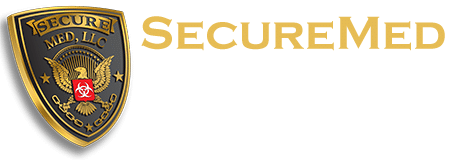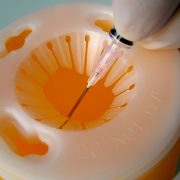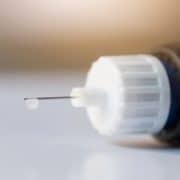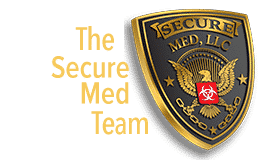4 Tips for Staying Sharp When Handling A Sharps Bin
How many needles would you guess are used in the United States each year? 100 million? 500 million? According to the World Health Organization, approximately 16 billion injections are administered worldwide, which means almost 800 million needles are used each year in the US! Obviously, every sharps bin that facilitates the collection and disposal of these 200,000,000 needles every day are essential to fully understand and correctly utilize.
1 – Recognize the Risks
Realizing that accidental needle pricks from contaminated needles could cause infections and potentially life-threatening diseases helps reinforce the importance of properly collecting and disposing of all sharps in an approved sharps bin. These transmitted diseases most often include hepatitis B, hepatitis C and HIV/AIDS, however in rare circumstances, it is also possible to transmit other terrible illnesses such as herpes, malaria, tuberculosis, and others.
Healthcare providers and staff must take every possible precaution to protect themselves against accidental injury and exposure to potentially infectious blood-borne viruses by safely handling sharps after use. This includes being trained on appropriate collection and disposal of sharps and sharps bin and partnering with a professional medical waste disposal company.
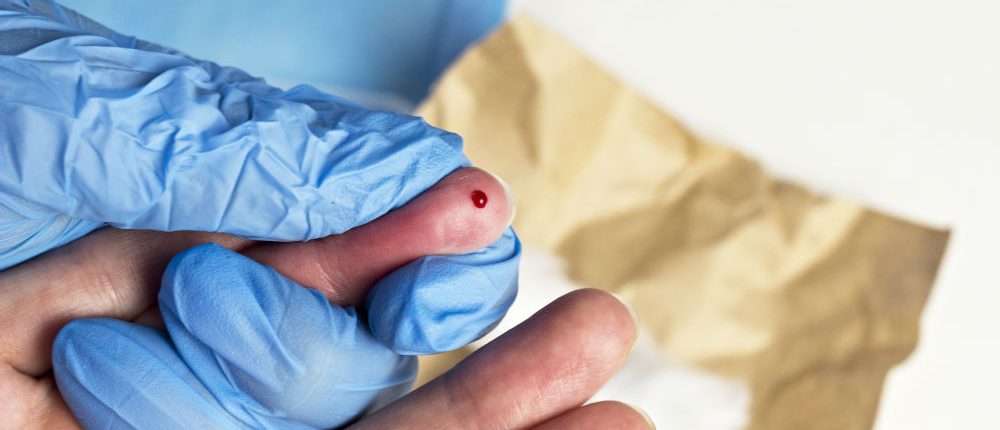
2 – Avoid Accidental Injuries
Accidental injuries can occur via cuts, needle pricks, or puncture injuries. Dangerous injuries and infections can also come from any kind of sharps waste, such as:
- Lancets, scalpels, blades and razors
- Broken medication ampoules, vials or other glassware contaminated with biohazardous substances such as body fluids, inoculate samples or culture mediums
- Needles with or without syringes, including insulin pen needles.
Most needle stick injuries occur when attempting to recap needles, which is why you should never attempt to recap used needles prior to disposal. To avoid carrying around uncapped needles for any length of time, a sharps bin should be immediately accessible for discarding used needles.
Sharps waste should never be simply tossed into a regular garbage container or biohazard bag. Sanitation workers, medical staff or even patients could be poked with these sharps or come into contact with leaked liquids. Rather, a closable, rigid, plastic, puncture and leak proof container should be used and clearly labeled as the place for storing all sharps until disposal.
3 – Select a Sharps Bin
A sharps bin should be strategically selected to appropriately suit each specific use and placement in a medication room, resident room or medication cart. The U.S. Food and Drug Administration (FDA) and Centers for Disease Control and Prevention (CDC) provide guidelines regarding the various sizes and colors of sharps bins to choose from. These include red containers used for cytotoxic medications/sharps that should be incinerated upon disposal, and yellow containers are used for sharps that must be disinfected (or autoclaved) upon disposal.
Other important general safety guidelines to follow to ensure the proper selection and safe usage of sharps bins include:
- Keep it in sight: The sharps bin in a room should be readily available and easily visible to doctors, nurses and other healthcare workers. It should be accurately color-coded and located at eye-level.
- Keep it in reach: To avoid carrying uncapped needles or transporting potentially contaminated sharps waste any distance, the sharps bins should be immediately accessible from the site of use.
- Size it right: The size or type of sharps bin used must be appropriately selected to accommodate for the typical amount of sharps waste generated each day in that location. For example, a one-quart sharps bin should hold up to approximately 500 needles or 36 insulin syringes.
- The thicker the better: A sharps bin must be made of heavy-duty plastic that is solid enough to prevent any needles puncturing through the walls of the container.
- No leaks allowed: Since needles, vials and other broken containers may have contain medicines or potentially dangerous liquids, every sharps bin must be fully leak-proof across the bottom and up the sizes. It should also be closable and sealable for transportation to disposal.
- Safe and secure: Dropping a sharps bin could be catastrophic to the health and safety of anyone in the vicinity. For this reason, these containers must be solidly anchored to the wall or to the stable surface they are attached in order to remain upright and to prevent any spillage.
4 – Know Where It Goes
Once a sharps bin is three-fourths full, it should be removed from use and set aside for proper disposal by a professional medical waste disposal company such as SecureMed. The company picks up all full containers and provides new, empty containers in exchange. Each full sharps bin is delivered to a sterilization facility to be incinerated or autoclaved for complete and thoroughly safe destruction.
The secure medical waste company should then provide you with an authentic certificate of destruction that provides you with the peace of mind that comes with knowing you are compliant with the rules and regulations that serve to keep your staff and your patients safe.
Get more information about how you can secure your own ultimate peace of mind through partnering with SecureMed for your sharps bin management, today!
